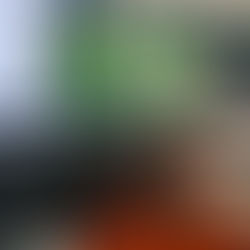Why Photogrammetry Can’t Penetrate Dense Vegetation for Topographic Surveys
- Hunter Bankston
- Oct 1, 2024
- 3 min read
Photogrammetry is a widely-used technique for generating accurate 3D models of landscapes by using aerial or terrestrial photos. While it's incredibly effective in open areas with clear visibility of the terrain, it faces significant limitations when it comes to penetrating dense vegetation for accurate topographic (topo) mapping. Here's why:
Photogrammetry’s Strengths and Limitations
Photogrammetry excels at creating detailed surface models when the terrain is visible. By analyzing overlapping images captured from different angles, the software reconstructs a 3D model of the visible surface. This approach works well in areas with low vegetation or clear ground, such as urban settings, construction sites, and open fields.
However, photogrammetry struggles to create accurate topographic models in areas with dense vegetation for a simple reason: it cannot see through the foliage. Photogrammetry relies on surface reflections from what is visible to the camera or UAV, meaning that in dense forests or areas with thick brush, the camera captures the canopy of trees and vegetation rather than the actual ground beneath them. As a result, the generated surface models represent the tops of trees and bushes, not the true topography of the terrain.
Vegetation Obstruction: A Major Challenge
When it comes to topographic surveys, the key goal is to map the bare-earth surface—the actual terrain free from any vegetation, buildings, or other surface features. In areas with dense vegetation, this is nearly impossible with photogrammetry alone. While some photogrammetric techniques can generate detailed 3D models of the canopy, the ground itself remains obscured, leading to inaccurate representations of elevation and terrain.
For civil engineers, land surveyors, and construction professionals who need accurate topo data, this lack of ground visibility poses serious challenges. Incorrect elevation data can lead to flawed designs, inaccurate material estimates, and costly errors during construction.
LiDAR vs. Photogrammetry in Vegetated Areas
This is where LiDAR (Light Detection and Ranging) technology has a distinct advantage. LiDAR uses laser pulses that penetrate through small gaps in vegetation to reach the ground. By capturing multiple returns (reflections), LiDAR can effectively differentiate between the canopy, underbrush, and the bare earth. This capability allows it to create accurate Digital Elevation Models (DEMs) even in areas with dense tree cover, something photogrammetry cannot achieve.
LiDAR’s ability to "see through" vegetation is particularly useful for:
Forestry management: Understanding forest density, biomass, and ground conditions beneath the canopy.
Environmental studies: Mapping wetlands, floodplains, and other sensitive ecosystems where ground visibility is limited.
Civil engineering: Designing infrastructure in wooded or vegetated areas, such as roadways or utility corridors, where precise ground elevation data is critical.
Conclusion
While photogrammetry remains a powerful tool for many applications, its inability to penetrate dense vegetation makes it unsuitable for topographic surveys in forested or heavily vegetated areas. In such cases, LiDAR is the go-to solution for generating accurate elevation models. Civil engineers and land surveyors need to be aware of this limitation when choosing a mapping technology for their projects, as selecting the wrong tool can lead to costly mistakes and delays. For topo surveys in areas with dense vegetation, investing in LiDAR technology is a must for achieving reliable, actionable data.
By understanding the limitations of photogrammetry and leveraging the strengths of technologies like LiDAR, professionals can ensure they are making the best choices for their specific project needs.
Below I've included some images to illustrate the level penetration LiDAR can get through dense vegetation or canopy. Photogrammetry does great on land that is bare earth or covered in concrete etc. However it is unable to penetrate canopy and dense vegetation to acquire true ground elevations.
#Photogrammetry #TopographicSurveys #LiDARVsPhotogrammetry #DenseVegetationMapping #SurveyingChallenges #TopoMapping #GeospatialTechnology #AerialMapping #LiDARTechnology #MappingSolutions #DroneMapping #CivilEngineeringTools


















































































Comments